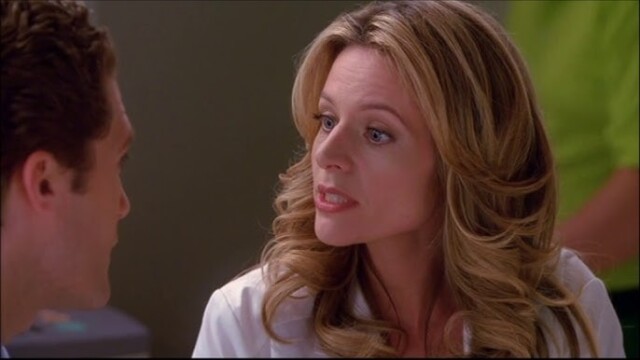In the world of television, character interactions often serve as a mirror to societal dynamics and personal growth. One such intriguing interaction is seen in the popular TV show “Glee,” where Emma Argues with Principal Figgins, the school counselor, frequently finds herself in disagreements with Principal Figgins, the head of McKinley High School. These arguments, though seemingly a small part of the show, offer a profound glimpse into the challenges and intricacies of educational administration and personal conviction.
Table of Contents
This blog post aims to dissect the dynamics between Emma Argues with Principal Figgins, exploring the depth and implications of their arguments. By delving into their characters, the thematic elements of their disagreements, and the audience’s perception, we can uncover the layers of complexity in what might initially appear as mere fictional conflict. This exploration not only enhances our understanding of “Glee” as a show but also offers insights into real-world educational and administrative challenges.
Who are Emma and Principal Figgins?
Emma Pillsbury and Principal Figgins are central figures in “Glee,” each embodying unique perspectives and values within the school’s ecosystem. Their interactions, particularly the instances where Emma argues with Principal Figgins, are pivotal in understanding their roles and the show’s narrative.
Emma Pillsbury: The Compassionate Counselor
- Character Overview: Emma is characterized by her caring nature, dedication to students, and a strong sense of ethics. She often acts as a moral compass within the school.
- Role in Conflicts: Her arguments with Principal Figgins usually stem from her advocacy for the students’ welfare and the arts, particularly the glee club.
Principal Figgins: The Administrative Authority
- Character Overview: Principal Figgins is portrayed as being primarily concerned with the school’s budget and reputation, often leading to conservative decisions.
- Role in Conflicts: His clashes with Emma highlight the tension between administrative decisions and student-centric interests.
Understanding Their Interactions
Each argument between Emma Argues with Principal Figgins serves to unravel their characters further. Emma’s passionate pleas often contrast with Figgins’ administrative rigidity, showcasing a classic battle between heart and head in educational settings. These interactions are not just about personal disagreements but are reflective of larger debates in education systems worldwide.
The Significance of Emma Arguing with Principal Figgins
The arguments between Emma Argues with Principal Figgins in “Glee” are significant for several reasons, both within the show’s context and in the broader scope of what they represent.
Reflecting Real Educational Challenges
- Representation of Conflicting Ideals: Their disagreements often mirror real-life conflicts between educational ideals and administrative constraints.
- Advocacy vs. Practicality: Emma’s advocacy for student welfare and the arts juxtaposes Figgins’ focus on budget and practicality, highlighting common dilemmas in schools.
Implications for Character Development
- Emma’s Growth: Through these arguments, viewers see different facets of Emma’s character, including her assertiveness and deep commitment to her beliefs.
- Principal Figgins’ Dilemma: These interactions also humanize Figgins, showing moments of understanding and compromise, adding depth to his character.
These arguments are not just plot devices but are instrumental in developing the narrative arc and deepening the viewer’s understanding of the characters and the complexities of school administration.
Key Moments: Emma Argues with Principal Figgins
Throughout “Glee,” several key moments where Emma argues with Principal Figgins stand out, each offering valuable insights into their characters and the show’s themes.
Notable Arguments and Their Contexts
- Support for the Glee Club: One of the most prominent arguments involves Emma advocating for the glee club’s existence and funding, challenging Figgins’ budget-centric decisions.
- Student Welfare Issues: Emma often confronts Figgins on matters concerning student health and well-being, pushing for more supportive policies and practices.
Analysis of These Scenes
- Character Dynamics: These scenes showcase the evolving dynamics between Emma and Figgins, often highlighting Emma’s determination and Figgins’ bureaucratic challenges.
- Impact on the Plot: These disagreements often serve as catalysts for plot developments, influencing the direction of the story and the fates of other characters.
Character Dynamics and Development
The ongoing arguments between Emma Argues with Principal Figgins are not just static conflicts but contribute significantly to their character development.
- Emma’s Evolution: Initially portrayed as somewhat timid, Emma’s arguments with Figgins reveal her growing assertiveness and confidence, especially in advocating for student interests.
- Understanding Figgins: The conflicts also peel back layers of Figgins’ character, showing a man torn between his duty as an administrator and the genuine needs of his students and staff.
These interactions are crucial in portraying a more rounded and realistic picture of both characters, moving beyond stereotypes to reveal their complexities and growth Anoushka Nara Giltsoff.
Themes Explored in Their Arguments
The arguments between Emma Argues with Principal Figgins in “Glee” are not just interpersonal conflicts; they delve into broader themes that resonate with real-world educational and societal issues.
Central Themes Illustrated
- Balancing Budget and Quality Education: Their debates often center around the struggle to provide quality education within budget constraints, a real issue in many schools.
- Student Welfare vs. Administrative Constraints: These conflicts highlight the challenges educators face in advocating for student needs against administrative and policy limitations.
- The Role of Arts in Education: Emma’s defense of the glee club underscores the importance of arts in the educational system, often undervalued in budget discussions.
Viewer Reception and Interpretation
The audience’s reception of Emma Argues with Principal Figgins adds another layer of depth to understanding the show’s impact.
- Empathy with Emma: Many viewers find themselves empathizing with Emma’s advocacy for student rights and the arts, reflecting a general public sentiment towards these issues.
- Understanding Figgins: On the other hand, some audience members appreciate the realistic portrayal of the challenges faced by school administrators like Principal Figgins.
These interactions not only engage viewers but also invite them to reflect on their perspectives on education and administration.
Comparing Real-Life Educational Dynamics
By comparing the fictional conflicts in “Glee” with real-life scenarios, we can gain insights into the complexities of educational administration.
- Reality Check: The show does a commendable job of reflecting the real dilemmas faced by educators and administrators, from budget cuts to prioritizing student welfare.
- Educational Reforms: These arguments can be seen as a microcosm of larger discussions and movements towards educational reform and the reevaluation of priorities in school systems.
When you’re ready, I’ll proceed with the final sections that cover the lessons learned from these interactions and the conclusion of the article.
Extracting Valuable Insights from Fictional Conflicts
The interactions between Emma Argues with Principal Figgins in “Glee,” while fictional, offer real-world lessons and insights. These lessons are valuable not just for educators and administrators, but for anyone navigating conflicts in professional settings.
Key Takeaways
- The Importance of Advocacy: Emma’s persistent defense of student welfare and the arts emphasizes the need for advocates in educational systems who prioritize student needs.
- Understanding Different Perspectives: The arguments highlight the importance of considering various viewpoints, acknowledging the challenges and limitations faced by school administrators.
- Effective Communication in Conflict: These interactions demonstrate the power of effective communication and negotiation in resolving conflicts and reaching mutual understanding.
Conclusion
The ongoing arguments between Emma Argues with Principal Figgins in “Glee” are more than just dramatic elements of a television show. They provide a window into the complex world of educational administration, highlighting critical issues like budget constraints, student welfare, and the role of arts in education. By dissecting these arguments, we gain insights into the challenges faced by educators and administrators, the importance of advocacy and communication, and the diverse perspectives that shape educational policies.
This exploration of Emma Argues with Principal Figgins not only enriches our understanding of the characters in “Glee” but also invites us to reflect on similar dynamics in real-life educational settings. It underscores the need for ongoing dialogue, empathy, and a balanced approach to decision-making in our schools.







